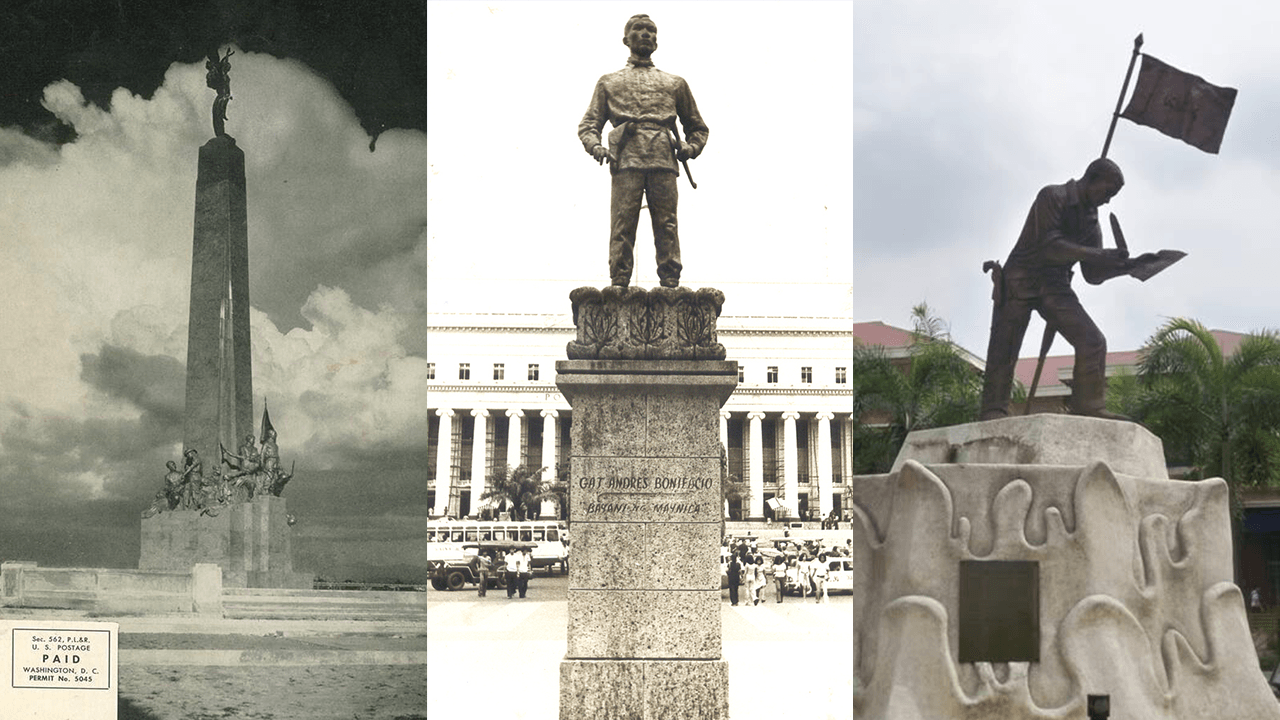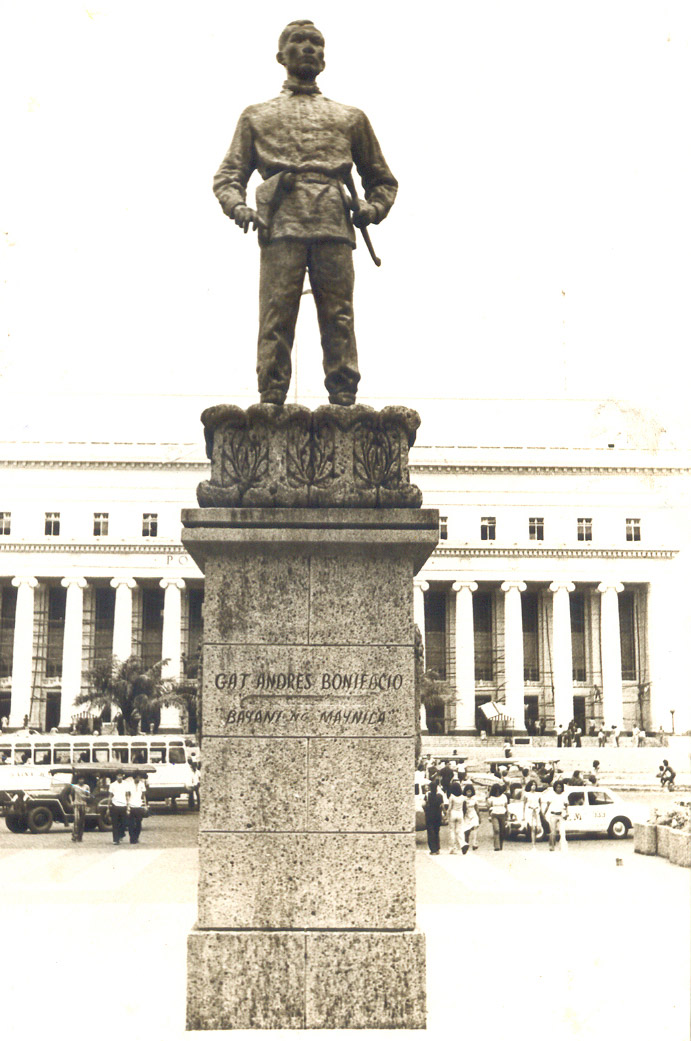SUMMARY
This is AI generated summarization, which may have errors. For context, always refer to the full article.

The image of Andres Bonifacio wielding a bolo, raring to lead revolutionaries in battle is firmly etched in most Filipinos minds.
Dubbed the “Father of the Philippine Revolution,” Bonifacio is one of the founding members and, later, the president or supremo of the KKK or the Kataastaasan, Kagalanggalangang Katipunan ng mga Anak ng Bayan, a secret society that fought for the freedom of the Filipino people from the Spaniards through revolution.
On Bonifacio Day, let’s revisit some of the monuments that commemorate the Father of the Revolution and celebrate his role in Philippine history.
The Andres Bonifacio Monument

For those who live in the northern part of Metro Manila, the Andres Bonifacio Monument is a daily sight on the way to and from work, school, and home. It is located in Caloocan City, near the LRT-1 stop, aptly called the Monumento Station.
In 1929, Manuel Quezon’s administration held a design contest for the creation of a Bonifacio monument as part of Bonifacio’s 66th birth anniversary. A total of 13 artists, all under aliases, submitted their designs. It was Batang Elias made by then UP School of Fine Arts Professor and now National Artist Guillermo Tolentino that made the cut. Tolentino was given a budget of P125,000 and took 3 years to finish the 200 square meter monument.

The monument consists of 23 bronze figures, a 45 foot obelisk, and is topped by the winged figure of Victory, which was finished in Germany and is made of granite. The obelisk is composed of five parts, corresponding to the five aspects of the KKK, while its octagon base represent the eight rays of the Katipunan flag, which in turn represents the eight provinces of the Philippines that fought against Spain in Luzon.
Some of the figures in the monument are Emilio Jacinto, the Brain of the Katipunan, and GomBurZa, the 3 Filipino priests who were executed by the Spanish government.
Bonifacio Shrine
Also known as the Bonifacio and the Katipunan Revolution Monument, the shrine is situated at the Heroes Park right in front of the Manila City hall.
The original glory of the shrine, made by renowned Filipino sculptor Eduardo Castrillo, was only recently restored under the administration of Manila City Mayor Isko Moreno.

The shrine depicts the life of Andres Bonifacio from his childhood until his pivotal role as a leader of the revolution.
The back of the shrine also commemorates another piece of history. The Kartilya ng Katipunan or the Katipunan Code of Conduct, written by Emilio Jacinto and later revised by Bonifacio, is carved on the back of the monument. The Kartilya served as the guidebook for new members of the Katipunan.
Dotted around the park are different versions of the KKK’s flags. There is also a memorial wall that lists down the names of those slain during Martial Law.
Liwasang Bonifacio

Just a few meters away from the Bonifacio Shrine and right in front of the Manila Post Office building is Liwasang Bonifacio.
It was also Guillermo Tolentino who designed this statue in 1963 as part of the centennial birth anniversary of Bonifacio. As part of the commemoration, what was then known as Plaza Lawton was renamed to Plaza Bonifacio.
In 2002, the Manila city government under Lito Atienza had plans to beautify the plaza, which had been engulfed by urban structures. Unfortunately, these plans did not push through.
In 2012, the National Historical Commission of the Philippines (NHCP) declared it a historical landmark to protect the zone from further urbanization.
Plaza Bonifacio, fittingly, has played host to many protest demonstrations through the years.
Andres Bonifacio Birthplace Monument
In the midst of the busy streets of Divisoria is a statue of Bonifacio. The monument can be found right in front of the Tutuban Center.

This should not come as a surprise because Tondo is listed as the birthplace of the Supremo, according to the NHCP. There is, however, still an ongoing debate over where Bonifacio was actually born – Tondo or Binondo. Divisoria, a commercial complex with no clear borders, spans both districts of Manila although Tutuban is in Tondo.
The statue was built in 1971, and unlike the image of a bolo-wielding Bonifacio that people are more familiar with, here Bonifacio holds a pen as he writes on a parchment paper. After all, Bonifacio didn’t just work towards a revolution against the Spaniards – he also wrote pieces to help awaken and radicalize Filipinos of his time.
Aside from revising the Kartilya, he also wrote “Ang Dapat Mabatid ng mga Tagalog” (What the Tagalog should know) and “Pag-ibig sa Tinubuang Lupa” (Love for One’s Homeland). – Rappler.com
Judiel Libot is a Rappler intern
Add a comment
How does this make you feel?
There are no comments yet. Add your comment to start the conversation.